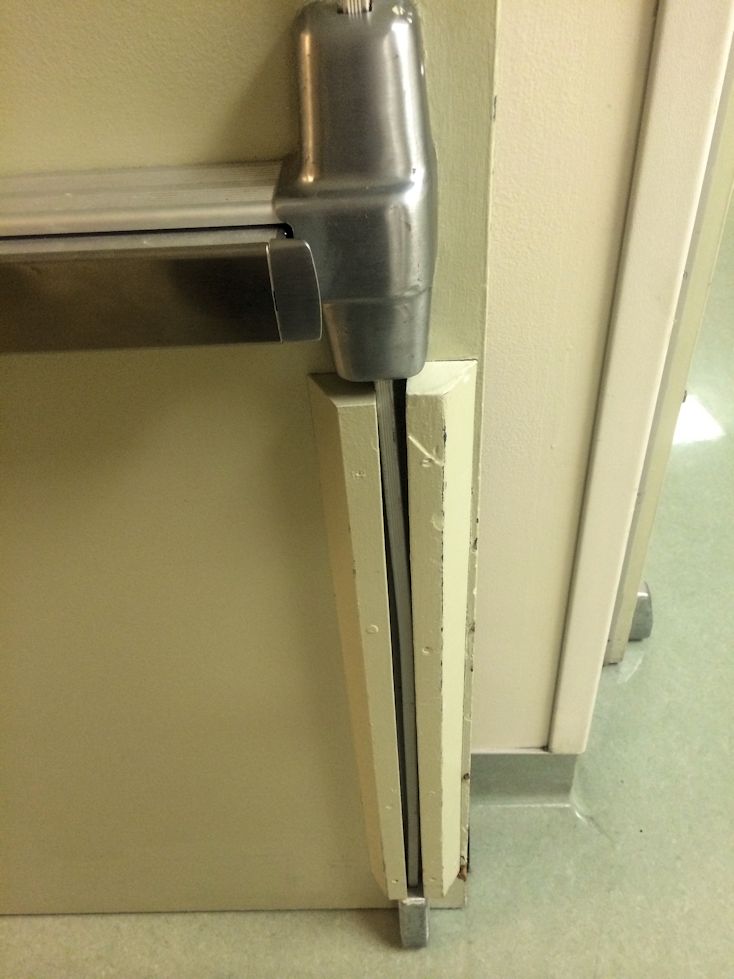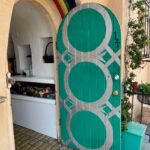Despite the panic hardware (not fire exit hardware) installed here, this is a fire door, according to Daniel Davis.
Products installed as part of a fire door assembly must be listed or labeled for that purpose. Components that are not listed or labeled must not be attached to the fire door and may void the label. In two recent cases I have seen non-listed protective guards for hardware as well as blinds installed on fire doors. The AHJ required them to be removed and the holes filled appropriately – with steel fasteners or the same material as the door and frame (there is also a fire door caulk available).
Thanks for the photos, Daniel!
You need to login or register to bookmark/favorite this content.







Brings to mind a much asked yet unanswered question, could the door be retrofitted with a fire bolt and the correct spring jn the exit device and removal of the bottom rods and latches and proper hole repair?
Hi Bryan –
I answered the question in this article: http://idighardware.com/2012/07/decoded-less-bottom-rod-fire-exit-hardware/.
“Before removing bottom rods and latches from existing fire exit hardware, it’s important to check with the manufacturers of the fire exit hardware and the fire doors, and to follow the required procedures. Doors that were installed before the introduction of LBR devices may not meet the fire test criteria for the use of the product. Retrofit kits are available for some brands of hardware, and the kit may include replacement top strikes that need to be installed. Removing existing rods and latches without following the proper procedures is likely to result in a fire door assembly that is no longer code-compliant.”
So the answer is – probably. 🙂
– Lori
No-
That panic will have an “accident hazard” label, rather than a “fire exit” label.
Changing to LBR would be fine if the device was correct, however.
The same thing has happened to the rods in my building, and I’m sure thousands of other buildings. One got hit by a cart so hard while the door was closing that we had to replace a rod. It would be nice if they came with a protective enclosure.
There are protective covers available, like the Von Duprin RG-27.
It seems logical that protective covers would be a code requirement for all fire rated door bottom rod installations due to the potential for damage. A case can be made for building owners to immediately repair such damage, but the preventative approach is probably a better guarantee for reliable performance.
Let’s not forget about ADA requirements. Are the exposed bottom latches even allowed on accessible openings?
Nope. Not on manual doors (per the current standards).
Rod guards, while functional, are not very visually pleasing to the eye. I suspect that’s why you don’t see them spec’d very often.
if the opening is fire rated then that means the Von Duprin 9927-F F= Fire rated = no dogging why is there dogging holes in the filler plate that slides into the exit device ??? someone ordered wrong
Yes, it looks like the wrong devices were installed.